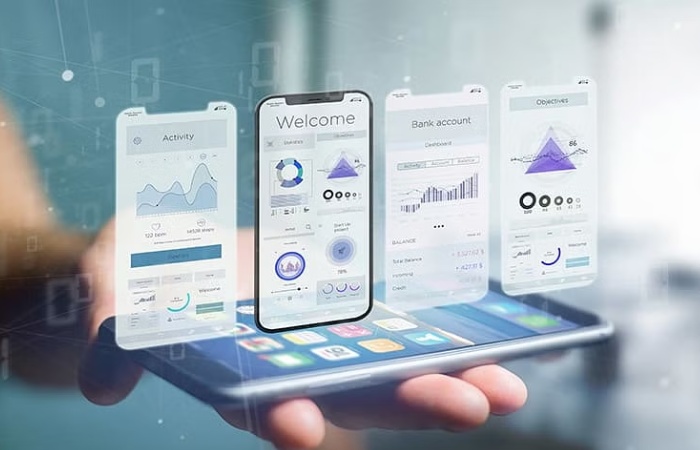Until recently, businesses typically outsourced mobile app development due to limited budgets and extended deadlines. However, between useful development platforms and software that does much of the work, many small businesses develop mobile apps in-house.
As a result, more and more businesses are appreciating the usefulness of mobile app development for internal purposes or customer use. Although developing an app for the first time can be intimidating, it can also be an advantageous experience.
This step-by-step director will walk you through the app development lifecycle to help you develop a successful app.
What to identify before developing a mobile application (App Development)

Before investing time and resources into creating a mobile app, a few considerations exist. While developing an app is pretty simple, planning a strategic digital solution can be complicated.
1. Define your target audience.
Make sure you have a good understanding of your target character. Understand your target users’ goals, behaviours, preferences, and their platforms and mobile devices.
This is where your app marketing can come into play. Tailor the app to your target audience to help them enjoy using it.
2. Perform competitor research
Do your research to make sure your idea isn’t already on the market. You don’t want to develop your app only to discover that a similar app already exists, making your efforts redundant.
Ensure your app strategy is unique to your business and easy to use for your target users. For business-specific apps, check out the competition to understand how your app will compare to others already on the market.
3. Decide on your operating system.
Currently, there are two central operating systems: iOS and Android. Will your application be a native application, that is to say, developed specifically for a particular operating system? Decisions regarding software compatibility will directly affect the functionality of the application.
A cross-platform framework (one app that works for iOS and Android) will generally be best for future development goals. It’s a simple way to set up your app for lasting success because more users can access it. To help you make a decision, consider your app development goals.
4. Incubate your app idea.
Before diving into those practical app development steps, ask yourself if your app is a solution to an existing problem. If so, think about how this will help you.
Or, if your application is specific to your organization, consider how the digital solution strategy will help achieve your business goals.
Pausing to think about this stage of the development process can allow you to preview your app’s future roadmap.
Finalize your top priorities for the app, making sure you and your team agree on the main goals. From there, you’ll know where to start with a solid foundation.
5. Plan your app design and security.
The design of your application is critical to its success. The program design must have a friendly user interface. The easier it is to use, the more likely users will download the app.
As crucial as app design and content are, don’t sacrifice security for cost. People have valuable and potentially sensitive information on their phones. Be sure to consider data protection features and privacy settings.
Improving your app security measures, such as implementing strong encryption, secure data storage, and regular security audits, can significantly increase user trust and security, ensuring that personal and sensitive information is well protected.
How to develop an app in 12 steps (App Development)

Creating an app doesn’t happen overnight. There are many steps your development team must follow to ensure your app launches correctly. Check out our simple 12-step guide to getting started developing a new mobile app:
- Identify an app idea
- Conduct competitive research.
- Describe the main features
- Create mockups
- Plan for application security
- Start coding
- Perform multiple tests
- Collect and implement user feedback
- Get started in the App Store
- Market your app
- Continue to deliver new features and updates
- Set up a development team
1. Identify an app idea
Creating an app starts with an idea. Before beginning development, you need to understand what your app does, whether it’s e-commerce, productivity, health and wellness, finance, or any other field.
To create a successful app, ensure your idea focuses on filling a specific unmet market need. If you are targeting an already congested area, your app should introduce different and innovative features to make it more attractive to potential users.
2. Conduct competitive research.
With over 1.8 million apps available for Apple users and over 3.5 million Android users, you’ll want to understand competitive features and customer requirements to make your product stand out.
You will also want to understand the market you are joining. You should be able to explain why the market needs your app and what you are doing differently to solve the problems. During this step, you may want to consider talking to potential users.
Interviewing customers for user feedback can give you specific insights into their needs. It can also allow your team to develop features other companies have overlooked, giving your app an advantage.
3. Outline core features
Next, define the main functions of the application. Now that you understand what’s missing in the market and what your target users are looking for, you can develop critical features that other development teams have overlooked.
While there are many great features an app builder should consider, remember to consider your company’s financial capabilities when determining which features you want.
For example, even if you want to implement facial recognition for login capabilities, it can be expensive to develop. Remember to add new features or updates once the app is live.
4. Create mockups
Once the team has gathered the requirements and outlined vital features, you’ll want a user interface (UI) and user experience (UX) designer to develop a mockup, template, and sometimes a tutorial that explains what to do. Application.
A mockup is a detailed preview of what your app will look like. A mockup follows a consistent colour palette and typography, including images and a basic layout. When executed correctly, a mockup should give the development team an overview of how the app will look and function.
The benefits of a mockup include:
- Allow the development team to review the appearance of the application.
- Show potential investors the app design before the development team starts coding.
- Explain the expectations of the development team.
5. Plan app security
The next step in creating an app is one of the most important features your app can have: security. It is essential to prevent cybercriminals from stealing user data. A single app breach could cost your business lost users and millions of dollars.
Ensure that the mobile application and mobile platform are secure by:
Encrypted data. Use appropriate encryption of sensitive personal data scattered throughout your application software. Appropriate security steps include local database encryption, cache, or API communication.
They allowed APIs. Application programming interfaces (APIs) are an essential part of the backend of programming development. Ensure the APIs you use for your app meet the verification standards of the platform on which your app is based.
Strong authentication. Ensure the application uses proper cryptographic key management and appropriate user session authorization (or tokens). Tokens are typically assigned to each device and contain different session expiration times.
Fraud detection software. To stop hackers, consider including mobile-specific security features, such as tamper detection and other third-party software. For example, interprocess communication (IPC) is a security measure that allows communication between applications and systems.
Constant testing to detect possible violations. The most important thing is to ensure you are constantly testing for violations. Throughout the development process, systematically review your code. Identify potential security vulnerabilities before a hacker does when the application goes live.
Upgrade based on feedback (App Development)
If you want to be sure that the updates you introduce to your app are relevant to users, base your decision on data. You need to know how your product is used. Analyze this information and react to it as soon as possible.
Below are some mobile app analytics platforms that you might find helpful. However, consult your technology team to determine which best fits your priorities.
- Google Analytics for Mobile Apps
- mixed panel
- Firebase Crashlytics
- Annie app
Finalize unique selling points (App Development)

Apps may have similar core functionality, but the unique selling point (or USP) makes your product stand out. Additionally, consumers usually don’t have much time to discover the “extraordinary uniqueness” of a specific product, making it quick and easy to resolve a particular problem.
Find all concepts similar to yours on the market and compare their functionalities according to these criteria:
- Advantages and disadvantages;
- Price;
- Main characteristics;
- Value;
- Assessments and achievements;
- Small details (look at every little detail in which your concept differs from the competition and determine whether it is an advantage or a disadvantage).
Fix bugs and make regular updates (App Development).
The main task is to check whether everything works stably, reliably, and securely. As anyone who has ever released software knows, it is impossible to anticipate and prevent every possible error.
Too many variables exist, including the number of devices, operating systems, screen sizes, and installed software configurations. Even the performance levels of specific devices can vary significantly. This is why the main task of the quality assurance department is to identify potential errors and help correct them. Testing is essential; any application risks being buggy and unstable without it.
Not all bugs are noticed at the pre-release testing stage for many reasons, but that’s not a problem: debugging after release is standard practice. Post-release technical support is also required to correct any errors that occur.
Conclusion
Anyone who has browsed the App Store knows millions of mobile apps exist. With such a comprehensive offering, it can be challenging to stand out. However, the rewards can be great for those willing to do the initial work.
In addition, the best studios have a team of professionals who are passionate about their work and always looking for ways to improve the product. By choosing a reputable studio, you can rest certain that your project will be in good hands.
Frequently Asked Questions
What elements make an application successful?
A genuinely successful mobile application must necessarily meet the needs of users. Offer them only valuable features, high download speed, ease of use, and fast technical support in case of problems.
What is the cost of successful app development in the United States?
The final price differs due to many factors, depending on the complexity. The average cost can range from $40,000 to $60,000 for a simple application, $60,000 to $150,000 for an average project, and over $300,000 for complex applications.
Therefore, hiring developers from Eastern Europe is usually cheaper because the qualifications of the specialists are generally the same.


